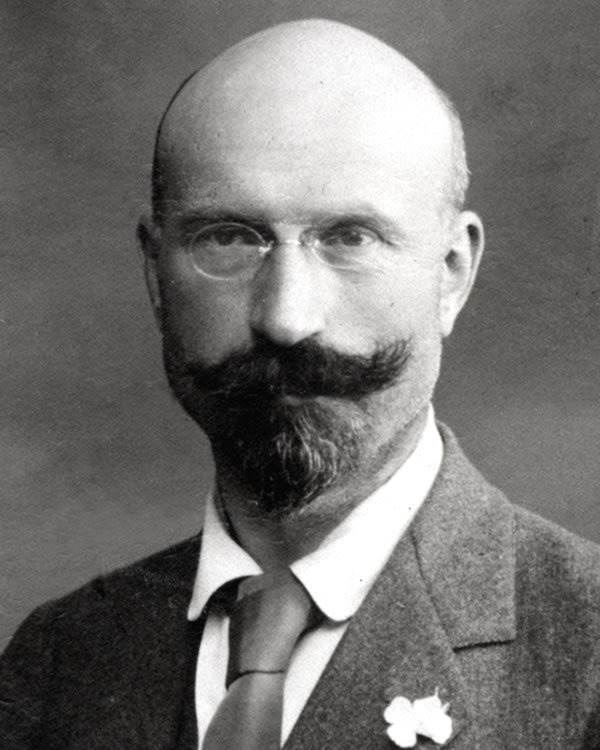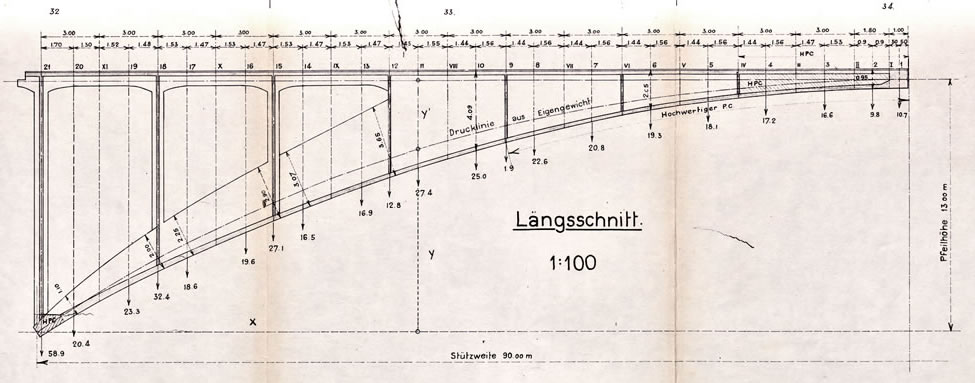Robert Maillart (1872–1940)
Structural engineer and entrepreneur

The fifth child of a Belgian banker, Robert Maillart was born in Berne on 6 February 1872.
After leaving school, he embarked on a degree in structural engineering at the Federal Polytechnic Institute in Zurich in 1890, where he mastered "graphic statics" developed by Carl Culmann among other things.
Working with cement
For the first eight years after completing his degree, Maillart studied the novel substance of reinforced concrete as an employee at Pümpin & Herzog, a civil servant at the City of Zurich's civil engineering department and, last but not least, at Froté & Westermann.
Although concrete with cement made of limestone and pozzolana was already used by the ancient Romans, the substance fell into obscurity in the Middle Ages before it was reinvented in the early nineteenth century. In the second half of the nineteenth century, the problem of concrete's lack of tensile strength was solved via the interaction between concrete and reinforcement.
Family life and the First World War
While working on the Inn River Bridge in Zuoz, Maillart met Italian Maria Ronconi from Turin. Shortly afterwards, they were married. The young couple settled in Zurich and Robert founded his own construction company called Maillart & Cie. The first buildings with mushroom ceilings brought him international success.
Traditionally, the Maillart family spent their summer holidays in Italy. In 1914, however, they travelled to Riga and were caught unawares by the outbreak of the First World War. The family had to flee the advancing front line to St. Petersburg and then Kharkov. Maillart's wife died in 1916 following a lengthy illness. At the end of the war, Maillart returned to Switzerland with his three children. He had lost his entire fortune in the wake of the October Revolution in Russia.
After effect of his works
Back in his native country, he withdrew from the public eye. Thanks to financial support from relatives, Maillart founded another successful company. He died in Geneva on 5 April 1940 at the age of sixty-eight.
Maillart's most famous structure is probably the Salginatobel Bridge near Schiers in Prättigau. The arched road bridge was completed in 1930 and boasts a span of ninety metres. It is based on the static principle of the three-hinged box girder arch developed by Maillart himself. The design for the bridge emerged from an architecture competition in 1928, which Maillart won with the most cost-effective design among the nineteen entries. In 1991 the Salginatobel Bridge was declared a World Monument by the American Society of Civil Engineers (ASCE).
Works
- 1899: Stauffacher Bridge, Zurich
- 1901: Inn River Bridge, Zuoz
- 1905: Rhine Bridge, Tavanasa
- 1912: Filter Building, Rorschach
- 1925: Magazzini Generali, Chiasso
- 1930: Salginatobel Bridge near Schier
- 1933: Thur Bridge near Felsegg (SG)
- 1939: Cement Hall at the Swiss National Exhibition in Zurich
Document

Holdings
Whereas portraits and diverse photographs of buildings by Robert Maillart are located in the E-Pics Image Archive Online, his personal papers are curated by the ETH Zurich University Archives (family correspondence: Hs 1286, Hs 1286a, Hs 1287, Hs 1287a, Hs 1288, Hs 1289; Maillart Archive: Hs 1084, Hs 1085, Hs 1086, Hs 1087). A biographical file on Maillart can also be consulted at the ETH Zurich University Archives.